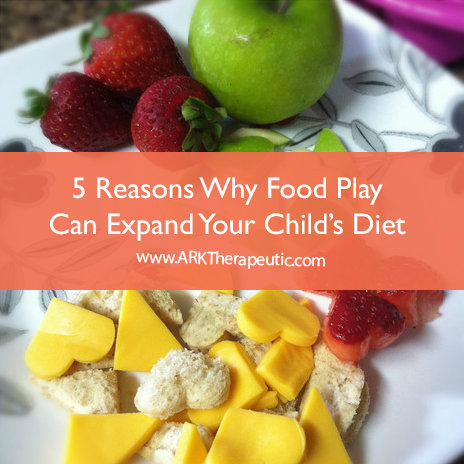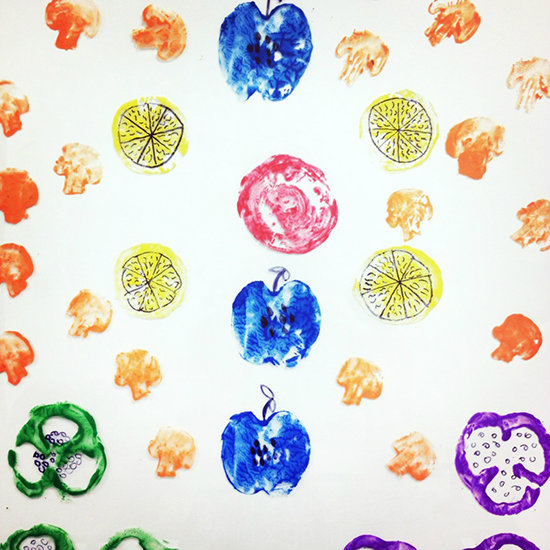5 Reasons Why Playing with Food Can Lead to Trying New Foods
Posted by Debra C. Lowsky, MS, CCC-SLP on 30th Jan 2014
We've all heard the popular "Don't play with your food!" mantra. But contrary to popular belief, playing with food is actually a wonderful way for kids to learn about and discover new foods. Why?
.

.
1. Trying a new food can be stressful, particularly for kids with sensory issues and/or food aversions. If you introduce a new food through play, you're removing the pressure/anxiety of having to take a bite and consume it.
2. Food play allows kids to take a step back from the fork. Food must never be forced, so you can use play as a a pre-feeding strategy to get kids to interact with foods that they normally would not, and to establish familiarity in a non-confrontational way.
3. Remember - kids learn through play! Food is no exception. So let them first learn about foods through the language that they know best. Let them feel it, smell it, go digging in a "spaghetti swamp" or march their toys through a "broccoli forest."
4. The sense of taste and smell are closely connected to each other when we eat. If kids get accustomed to the smell of a food before they taste it, that's another step towards eliminating the "unknown" and taking a bite.
5. Food play also feeds into the hand-to-mouth connection we have. Finger feeding begins around 8 months of age as the first step towards independent eating, and from there we continue to use our hands with food. Both our hands and mouth are also sensory organs that are highly perceptive to texture. So manipulating food with the hands can desensitize a child to different foods and support them in trying new foods.
.
There are endless fun ideas for food play, ranging from playing with food on the plate to getting messy with real food in a non-meal setting:
.

.
• Make stamps with cut apples, potatoes, etc.
• Let kids cook / prepare foods with you.
• Cut food into different shapes.
• Make faces using marshmallows, cheerios, veggies, etc.
• Make "sand castles" out of brown sugar or "worms" by filling straws with jello.
• Use food as checker pieces, houses in monopoly, etc.
• Go digging for dinosaurs in brown sugar "sand."
.
Get creative, have fun, and don't be afraid to get messy!
For kids with severe texture aversions and oral defensiveness, keep in mind that you may need to work your way up to playing with real food. Start with non-food sensory play activities. Introduce pretend foods to play and interact with. Slowly work up to introducing real food in sensory play. Sometimes just having a new food in the room will be progress. Eventually you'll move the food to the table. They don't have to touch it - it's enough to just be there. In time they will touch and play with it, with the end goal of taking a bite. Remember that feeding therapy can be a long process. Have patience and celebrate every step!
.
All my best,
Debbie
Debra C. Lowsky, MS, CCC-SLP
.

